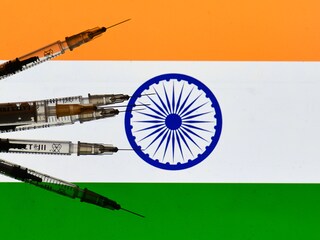Is government's frenzy for world's largest vaccination programme misplaced?
Public expenditure money should be used for improving overall medical infrastructure and reducing overall death rate in the country


Further, on January 3, number of daily Covid-19 deaths was 214. We also observe that this number has also been steadily going down (see figure 3). Clearly, number of daily Covid-19 deaths will also be zero very soon.
Notwithstanding this reality, the central government has rolled out the “world’s largest inoculation programme”. The media, as usual, has forgotten all other issues and have been spending all their time and space reporting this programme. There are also issues related to the government “controversially” granting permissions to two agencies for introducing their vaccines to the common man. That is a separate issue, and I shall not deal with it in this article.
Inoculation against any disease is important, especially against a virus that has led to a global pandemic. But the reason for trying to hurriedly vaccinate the entire country is not clear. Experts are divided on the efficacy of these vaccines because of incomplete information about the trial runs. In addition, as noted above, the number of new Covid-19 cases in the country has been on a consistent decline.
The country-wide vaccination plan will be a huge public expenditure. The government has indicated that the task will be carried out in the same way the national elections are held. The recently concluded 2019 Lok Sabha elections saw an estimated expenditure of around Rs 55,000 crore. Some may argue that cost should not be a criterion for such important public health concerns. I agree. I argue that such a huge sum of money should be used for improving overall medical infrastructure and reducing overall death rate in the country. I shall try to explain below why I say this.
Please see Table 1. Number of non-Covid-19 deaths per 1,000 people in India currently stands at 7.31. All the neighbouring countries except Myanmar (8.29) and China (7.40) have lower non-Covid-19 deaths per 1,000 people. Bangladesh has the lowest non-Covid-19 deaths per 1,000 at 5.54. Being the second most populous country, India has a very high absolute number (about 70 lakhs) of non-COVID19 deaths annually.
According to UNICEF, approximately 69 percent children under 5 years of age in India die due to malnutrition. The absolute number of deaths due to malnutrition is more than 7 lakh among children below age of 5 years. Thus, the number of annual deaths due to malnutrition is about 4.5 times than that due to Covid-19 as of now.
I have highlighted only a few aspects of the country’s policy priority in improving healthcare facilities for the poor and the children. I wonder if the current hullaballoo about the “world’s largest inoculation programme” of the central government is unhealthily misplaced. I leave it to the readers to make their own judgment.
Malay Bhattacharyya, Professor in the Decision Sciences area at IIM Bangalore.
First Published: Jan 20, 2021, 10:09
Subscribe Now